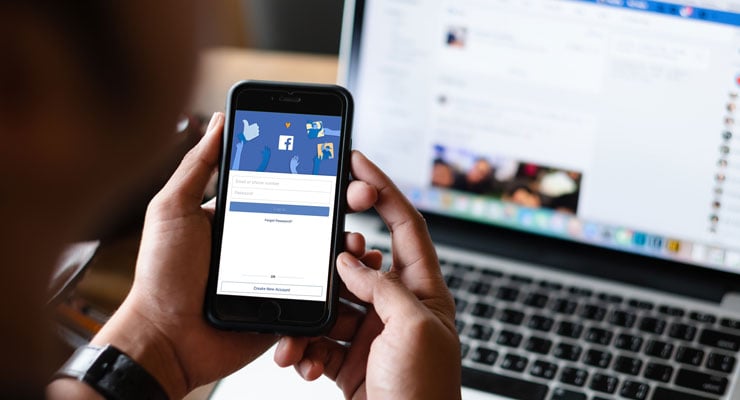 Written by: Emily Young // Jan 14, 2020
Written by: Emily Young // Jan 14, 2020
Last updated: Jan 17, 2023
If you happen to be an adorable Australian Shepherd who can bake holiday cookies and play Jenga, then you’ll have no problem expanding your network on social media. The rest of us could use some advice. Connecting to industry leaders can feel tricky, but with the right tools and a solid grasp of social media etiquette, you’ll effectively grow your professional network (without being annoying).
Choose Your Platform
Know where to spend your energy: LinkedIn and Twitter should be your top priorities, but Facebook and Instagram can also expand your connections. Once you’ve created your accounts, build an online brand by linking your social profiles to one another and to your personal website.
Set aside enough time to maintain your social presence. At least once a week, post useful content related to your field, suggests Diana Prado, a media strategy manager at USF.
“(A)ll young professionals should have a LinkedIn account,” says Kelli Burns, associate professor at USF’s Zimmerman School of Advertising & Mass Communications and author of Social Media: A Reference Handbook. LinkedIn allows you to showcase everything from your education to your work history and skills. But it’s much more than an online résumé; It also gives you the chance to connect with colleagues and future employers.
Before you invite others to connect with you, ensure your profile features a high-quality headshot and a professional headline (a description of yourself). “I get a lot of requests from people who don’t have a photo and don’t have a description under their name,” says Burns. Without a photo and headline, that request becomes an “automatic decline.”
Ask a friend to take a professional photo that you can use not only for LinkedIn, but for all your social media profiles. Pro tip: When your friend takes the photo, look slightly to your left. That way, when you upload your photo to LinkedIn, it will appear as though you are gazing into your profile, says Burns. This guides the viewer’s eye to your content.
Not sure what to write for your headline? Use your current title and company (i.e., reporter at The New York Times). If you aren’t employed in your field of interest, write down what you hope to become (i.e., aspiring journalist), says Burns.
Once you’ve filled out your profile, start expanding your network:
- Join LinkedIn groups.
- Invite colleagues to connect with you. Go beyond the default wording that LinkedIn provides, because “a personal invitation just helps you stand out,” Burns says.
- Search for professionals in your field. “You can do a search using your geographic area and key words from your profession,” suggests this networking resource from USF. “You can also make use of the LinkedIn alumni tool. Simply go to > Network > Find Alumni.”
Along with posting industry-related content, be strategic about the connections you want to make on Twitter. This SHRM blog post offers networking tips from career strategist Tim Tyrell-Smith:
- Follow the top 10 companies that interest you.
- Retweet their posts. (Note: Rather than simply retweeting, include your own commentary by selecting the option to “quote tweet,” explains this New York Times article.)
- Create a Twitter list that includes each of the company’s accounts.
- When appropriate, “send followers direct messages and notes of encouragement,” says Tyrell-Smith. “Become a part of their lives by communicating with the company.”
Not only will this help potential employers notice you, it will also give you an idea of the company culture for when you land that interview.
With more than 2 billion monthly active users, Facebook offers you a wide range of potential connections — and joining a Facebook group is one of the best ways to reach them. If you’re a female entrepreneur, for example, you can choose from many different groups designed to help you achieve your career goals. Participate regularly, support other members, and don’t be afraid to ask for advice when you need it.
One caveat: The culture of Twitter welcomes you to follow people you don’t know, but Facebook still feels more intimate. Stick to friend-requesting contacts you’ve met in real life.
If you’re an artist, photographer, travel writer, real estate agent, or dog trainer, the highly visual Instagram is the ideal place to showcase your work. What if your job doesn’t translate easily to images? “Even if your current role at work isn’t visual, you can use the platform to highlight personal achievements and passions,” explains a NBC News article.
To connect with other Instagrammers, send encouraging direct messages, comment on their posts, and use relevant hashtags that help others discover your content.
Keep it Professional
Pretend you’re meeting a new person at a work-sponsored party. Do you:
A. Launch into a rant about how terrible your boss is.
B. Chug six beers without breaking eye contact.
C. Brag about yourself for 20 minutes straight.
D. Display your uncanny ability to play Jenga even though you have four paws.
E. Congratulate your new acquaintance on their recent promotion.
The correct answer is, of course, D. But if you are not a very talented Australian shepherd, then the runner-up is E. When meeting someone at an offline event, we present ourselves in a polite, professional way. Your social media presence should follow that same etiquette. Think about how you can enrich the lives of your followers — and post like your dream company is watching. (They might be.)
Bring Your Offline Connections Online
Résumés are a condensed, one-page snapshot of what you can offer a potential employer. Your social media profiles, on the other hand, give employers an in-depth look at your passions and projects. Prado says she always checks a potential hire’s LinkedIn for interesting content and experiences that didn’t make the cut to that one-page résumé, which is why it’s important to keep your social accounts updated.
Burns suggests you create a unique LinkedIn URL and include it on your résumé and business cards. When you network at in-person events, give your card to your new contacts so they can learn more about you — and continue the conversation — online.
After a networking event, wait no more than 48 hours to send an invitation or friend request, and include a personal note that mentions your meeting.
Reach Out
Maybe, even after reading this post, the idea of networking makes you squirm. Reverse the way you think of it. Smart networkers don’t just ask for help, they also offer it. Consider how you can provide support and expertise to your connections. Although you may not have the same level of influence as a CEO, you’ll be surprised how much you can aid others, whether endorsing a colleague’s skills on LinkedIn or encouraging someone who’s having a bad day. “Giving to get really does work — your connections are more likely to return the favor when you’ve offered to help them,” as this Balance Careers article says.
When it’s time to reach out to someone on social media — especially LinkedIn — follow these tips from this Harvard Business Review article:
- Contact peer-level colleagues, who are more likely to reply than a CEO.
- Get to the point. Keep your message to three sentences and under 100 words.
- Be warm: “The pros who get the best response rates treat their messages as handwritten notes with a personal touch.”
- Establish common ground. The Review says that “referencing a mutual connection boosts the acceptance rate of these messages by 51%, second only to attending the same school at the same time (53%).”
Looking for more social media advice? Check out our guide on how to leverage social media for better career opportunities. Then start expanding your network today by connecting with us on Facebook, Instagram, Twitter, YouTube, LinkedIn, or through our website. Good luck.




